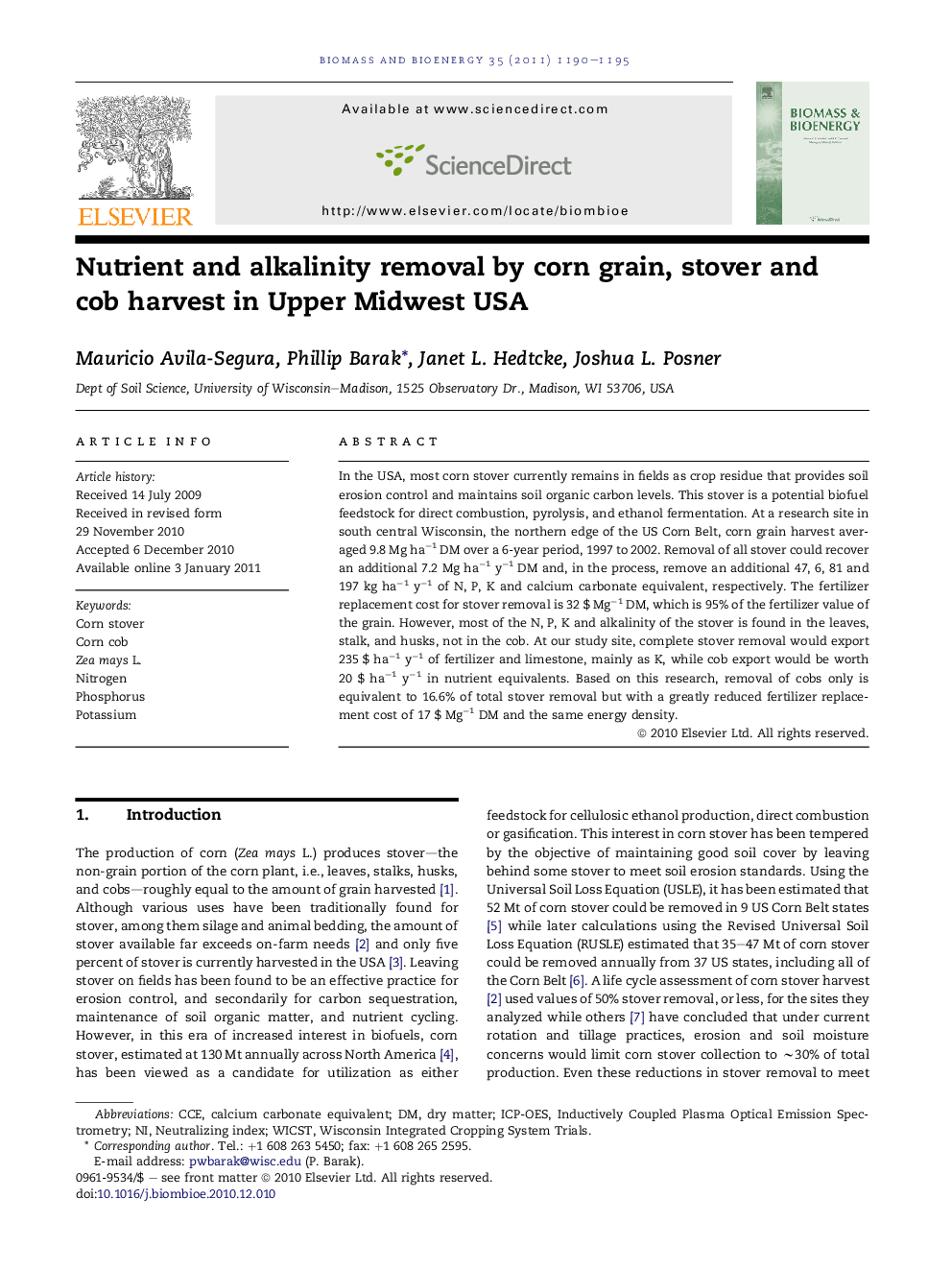| Article ID | Journal | Published Year | Pages | File Type |
|---|---|---|---|---|
| 10393818 | Biomass and Bioenergy | 2011 | 6 Pages |
Abstract
In the USA, most corn stover currently remains in fields as crop residue that provides soil erosion control and maintains soil organic carbon levels. This stover is a potential biofuel feedstock for direct combustion, pyrolysis, and ethanol fermentation. At a research site in south central Wisconsin, the northern edge of the US Corn Belt, corn grain harvest averaged 9.8 Mg haâ1 DM over a 6-year period, 1997 to 2002. Removal of all stover could recover an additional 7.2 Mg haâ1 yâ1 DM and, in the process, remove an additional 47, 6, 81 and 197 kg haâ1 yâ1 of N, P, K and calcium carbonate equivalent, respectively. The fertilizer replacement cost for stover removal is 32 $ Mgâ1 DM, which is 95% of the fertilizer value of the grain. However, most of the N, P, K and alkalinity of the stover is found in the leaves, stalk, and husks, not in the cob. At our study site, complete stover removal would export 235 $ haâ1 yâ1 of fertilizer and limestone, mainly as K, while cob export would be worth 20 $ haâ1 yâ1 in nutrient equivalents. Based on this research, removal of cobs only is equivalent to 16.6% of total stover removal but with a greatly reduced fertilizer replacement cost of 17 $ Mgâ1 DM and the same energy density.
Keywords
Related Topics
Physical Sciences and Engineering
Chemical Engineering
Process Chemistry and Technology
Authors
Mauricio Avila-Segura, Phillip Barak, Janet L. Hedtcke, Joshua L. Posner,
